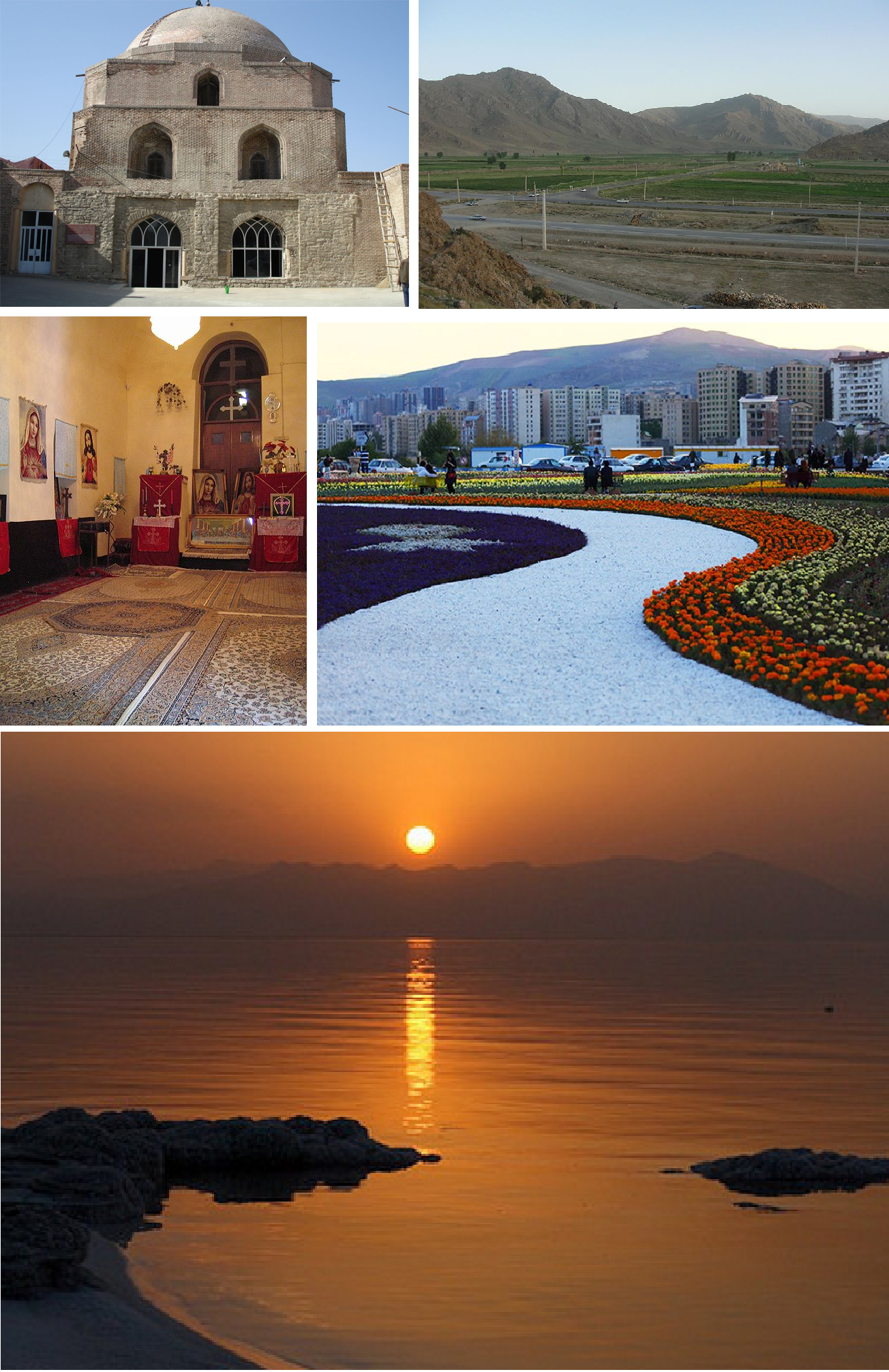Urmia (Persian: ارومیه; Azerbaijani: Urmiya, اورمیه; Kurdish: Ûrmiye, ورمێ; Syriac: ܐܘܪܡܝܐ; (pronounced [oɾumiˈje] ( listen)) is the largest city in West Azerbaijan Province of Iran and the capital of Urmia County. It is situated at an altitude of 1,330 metres (4,360 ft) above sea level, and is located along the Shahar Chay river (City River) on the Urmia Plain. Lake Urmia, one of the world's largest salt lakes, lies to the east of the city, and the mountainous Turkish border area lies to the west.
listen)) is the largest city in West Azerbaijan Province of Iran and the capital of Urmia County. It is situated at an altitude of 1,330 metres (4,360 ft) above sea level, and is located along the Shahar Chay river (City River) on the Urmia Plain. Lake Urmia, one of the world's largest salt lakes, lies to the east of the city, and the mountainous Turkish border area lies to the west.
Urmia is the 10th most populated city in Iran. At the 2012 census, its population was 667,499, with 197,749 households.The city's inhabitants are predominantly Azerbaijanis who speak the Azerbaijani language.There are also minorities of Kurds, Assyrians, and Armenians.The city is the trading center for a fertile agricultural region where fruits (especially apples and grapes) and tobacco are grown.
The Christian history of Urmia is well preserved, and is especially evident in the city's many churches and cathedrals.
An important town by the 9th century, the city has had a diverse population which has at times included Muslims (Shias and Sunnis), Christians (Catholics, Protestants, Nestorians, and Orthodox), Jews, Bahá'ís and Sufis. Around 1900, Christians made up more than 40% of the city's population; however, most of the Christians fled in 1918 as a result of the Persian Campaign during World War I and the Armenian and Assyrian Genocides by Ottoman Empire.
